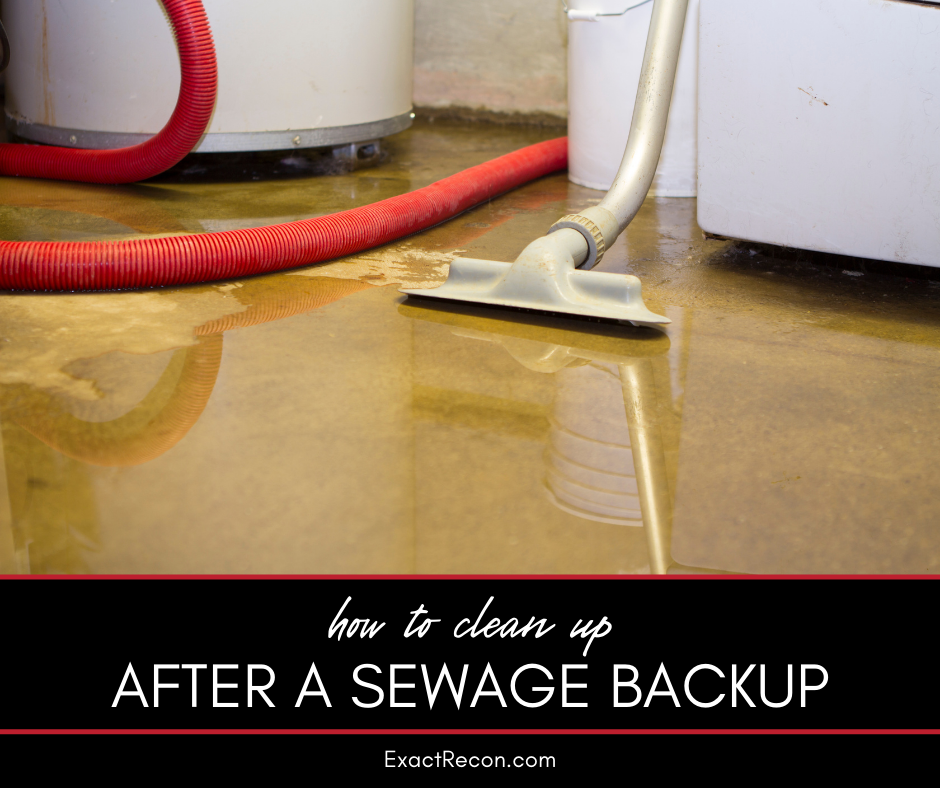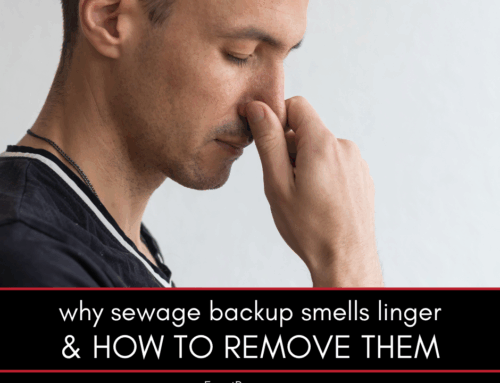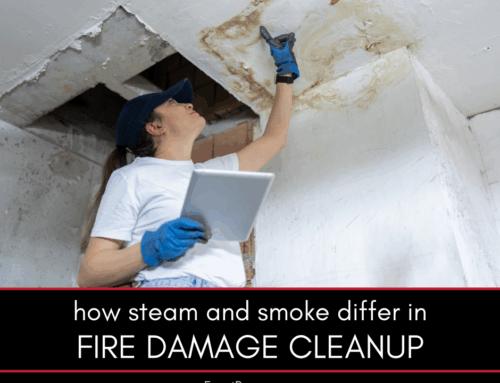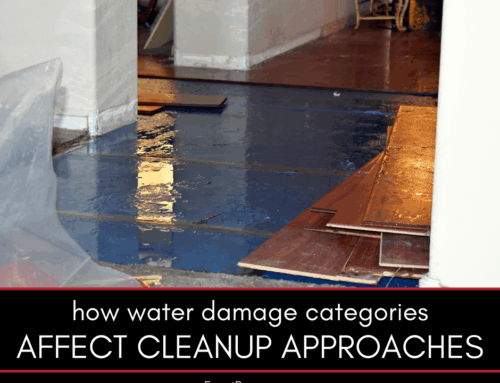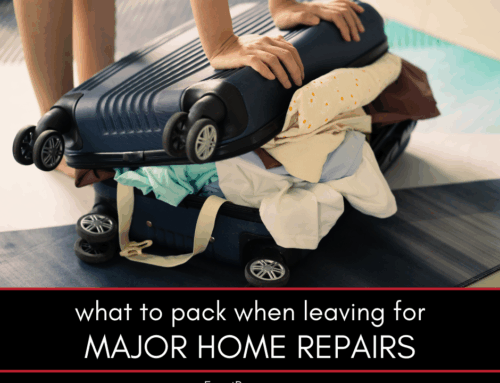Sewage backups are more than just a mess—they can introduce harmful bacteria, mold, and pathogens into your home. Cleaning up after a sewage backup requires a careful and thorough approach to prevent health risks and minimize property damage. With the right steps, you can restore your home and reduce the chances of future issues.
How to Clean Up After a Sewage Backup
Cleaning up after a sewage backup requires immediate attention and careful handling. The contaminated water can spread bacteria and mold, creating serious health hazards if not managed correctly. This guide explains the following:
- Taking safety precautions before cleanup
- Removing standing water and sewage
- Cleaning and disinfecting affected surfaces
- Drying and dehumidifying the area
- Knowing when to call a professional
Here’s a closer look at each.
Taking Safety Precautions Before Cleanup
When dealing with sewage, safety is the top priority. Sewage water contains harmful bacteria and viruses that can cause infections and other health problems. To protect yourself, always wear protective gear, including rubber gloves, boots, and a face mask, when entering the affected area. Avoid direct contact with sewage and contaminated surfaces, and keep children and pets away from the area.
Before you begin, turn off the electricity in the affected area if it’s safe to do so. Avoid using electrical equipment near standing water to reduce the risk of electric shock. Also, shut off the water supply if necessary to prevent further contamination. Proper ventilation is essential, so open windows and doors to let fresh air circulate and reduce foul odors during cleanup.
Removing Standing Water and Sewage
Start by removing any standing water and sewage. Use a wet/dry vacuum, if available, to extract as much water as possible. Be sure to empty and clean the vacuum’s tank regularly to avoid spreading contamination. If the backup is severe, consider using a pump to drain larger amounts of water, or hire a professional if the equipment needed is beyond your capability.
Dispose of any unsalvageable items, such as carpets, rugs, or porous materials that have come into contact with sewage. These items can absorb bacteria and may be difficult to clean thoroughly. Double-bag contaminated materials in heavy-duty garbage bags to prevent leakage and follow local disposal guidelines for hazardous waste.
Cleaning and Disinfecting Affected Surfaces
After removing standing water, it’s essential to clean and disinfect all surfaces that may have come into contact with sewage. Hard surfaces, such as tile, concrete, and metal, can be scrubbed with hot water and a heavy-duty cleaner. After cleaning, disinfect the area with a bleach solution (1 cup of bleach to 1 gallon of water) or a commercial disinfectant to kill bacteria.
Porous surfaces, like drywall and wood, may need to be removed and replaced if heavily saturated with sewage. Mold and bacteria can penetrate these materials, making them challenging to sanitize effectively. For semi-porous surfaces that you want to keep, apply a disinfectant, then rinse and allow them to dry completely.
Be sure to clean any tools or equipment used during the process with a disinfectant solution to prevent spreading bacteria. The Centers for Disease Control and Prevention provides guidelines on handling contaminated materials safely, which can be helpful if you’re unsure about certain steps in the cleanup.
Drying and Dehumidifying the Area
Once surfaces are cleaned and disinfected, thoroughly dry the area to prevent mold growth. Use fans, dehumidifiers, and open windows to circulate air and reduce moisture. Running a dehumidifier can speed up the drying process and help maintain low humidity levels, discouraging mold and mildew.
Check any hidden or hard-to-reach areas for dampness, as moisture can remain in areas like wall cavities, insulation, and under floors. These areas may require additional drying efforts, such as using a commercial-grade dehumidifier or specialized drying equipment. Be patient, as complete drying may take several days, depending on the level of saturation.
Knowing When to Call a Professional
While minor sewage backups may be manageable with basic cleaning supplies, severe or large-scale contamination often requires professional intervention. Restoration specialists have the expertise and equipment to remove sewage safely, clean the area thoroughly, and prevent future issues like mold growth.
If sewage has spread beyond one room, soaked into walls or floors, or affected your HVAC system, it’s best to contact a professional sewage cleanup service. Professionals can identify hidden areas of contamination, assess the extent of water damage, and ensure that all affected areas are safely disinfected.
FAQ About Cleaning Up After a Sewage Backup
Check out these commonly asked questions about cleaning up after a sewage backup. If you don’t see your question here, please call our office and we’ll find you the answers you need.
What Should I Wear During Sewage Cleanup?
Wear rubber gloves, boots, a face mask, and, if possible, protective eyewear to avoid exposure to harmful bacteria. This gear helps protect against infections and contamination during cleanup.
How Do I Disinfect My Floors After a Sewage Backup?
Clean floors with hot water and a heavy-duty cleaner, then disinfect them with a bleach solution or an appropriate disinfectant. Allow the floor to air-dry completely to prevent mold.
Should I Remove Carpet After a Sewage Backup?
Yes, it’s generally best to remove carpet that has been exposed to sewage. Carpeting absorbs bacteria, making it difficult to sanitize effectively. Removing and replacing contaminated carpet is the safest option.
Can I Save Furniture That Was Exposed to Sewage?
Hard furniture can often be cleaned and disinfected, but upholstered items may need to be discarded due to bacteria in the fabric. Consider consulting a professional for advice on heavily contaminated items.
How Long Does It Take to Clean Up After a Sewage Backup?
Cleanup times vary based on the extent of contamination, but thorough drying and dehumidifying typically take several days. Severe backups may require professional intervention, which can extend the timeline.
Do You Need a Disaster Remediation Expert in Washtenaw County or Jackson County?
If your home has already been damaged, we can help. Check out our services and call Exact Recon for your free disaster remediation quote today. We offer:
- Water damage restoration
- Fire damage restoration
- Mold removal and remediation
- Fire and smoke restoration
- Sewer cleanup and disinfecting
- Reconstruction
- Wind and storm damage repair

